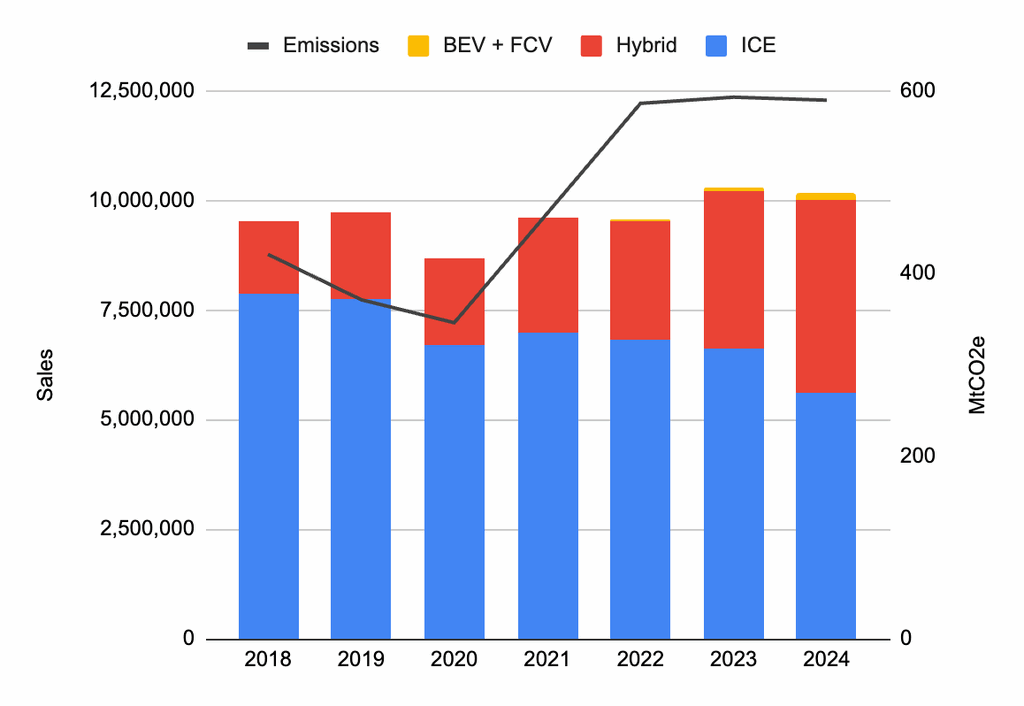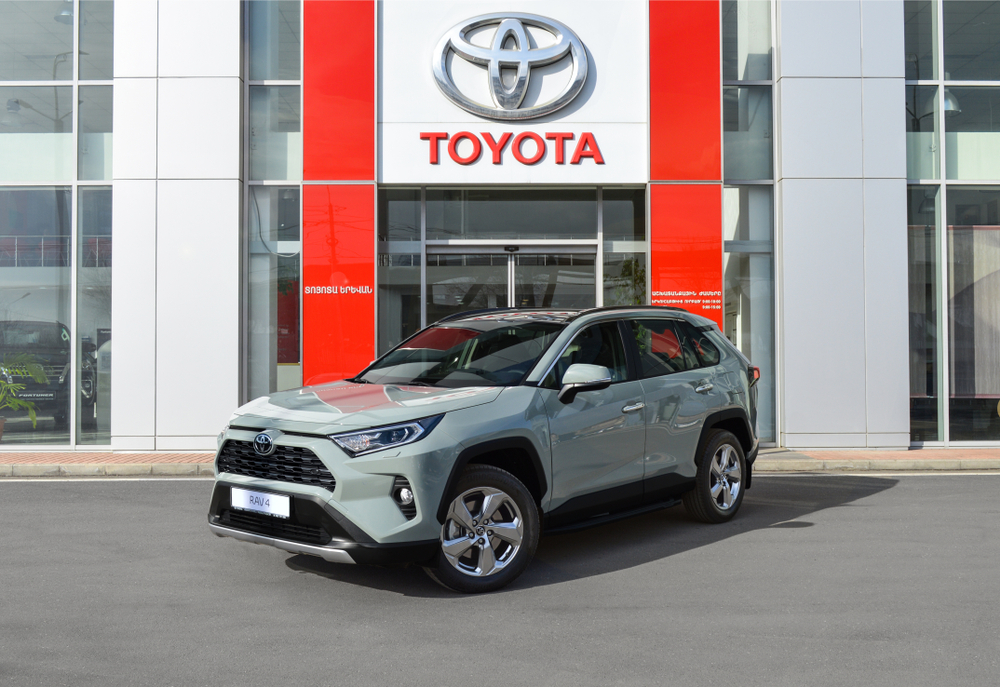Despite increased hybrid and EV adoption, emissions show minimal decrease
TOKYO – Greenpeace Japan issued the following comment in response to Toyota Motor Corporation’s publication of its greenhouse gas emissions for 2024 on its Sustainability Data Book [1] on 30 October.
Key points:
- The total emissions for 2024 were reported as 589.57 million tonnes of CO₂ equivalent (MtCO₂e), covering Scope 1 (direct emissions), Scope 2 (indirect emissions), and Scope 3 (upstream and downstream emissions). Due to a change in the calculation method from CO₂-based to GHG-based, the emissions data for 2023 have been revised upwards to 600.32 MtCO₂e (previously 592.89 MtCO₂). This means that the 2024 emissions were cut by 10.75 million tonnes from the previous year.
- Emissions from the largest category, “Use of sold products (Scope 3 Category 11)”, amounted to 432.16 MtCO₂e, showing a limited reduction from the 436.28 MtCO₂e recorded in 2023.
- Looking at total vehicle sales figures, 2024 saw a 1.4% drop from the previous year [2]. However, the proportion of hybrid vehicles (HV) within total sales for the same year rose by 9 percentage points, from 33% to 42%, as shown in the figure below. Furthermore, while sales of battery electric vehicles (BEVs) and fuel cell vehicles (FCVs) combined totalled 1.1% in 2023, this figure increased to 1.4% in 2024.
Mariko Shiohata, Greenpeace Japan Climate and Energy Campaigner, said:
“We welcome Toyota’s efforts to enhance the accuracy of its emissions calculation and reporting methods. That said, this figure of 589.57 MtCO₂e represents a colossal amount of emissions, equivalent to more than half of Japan’s annual emissions.
“In 2024, the proportion of hybrid vehicles (HVs) in sales has risen, and the number of battery electric vehicles (BEVs) sold has also increased. If the total number of vehicles sold remains constant, emissions should decrease. However, in reality, overall emissions have not decreased significantly. This suggests that Toyota’s internal combustion engine (ICE) vehicles sold may be becoming larger, increasing emissions per vehicle. This increase could offset the emissions reductions achieved through increased sales of HVs, BEVs, and fuel cell vehicles (FCVs). Indeed, data from the United States, Toyota’s largest market, indicates that the weight of vehicles sold by Toyota has been increasing from 2022 to 2024 [3].
“Toyota frequently emphasises how environmentally friendly HVs are compared to ICE. As indicated in the report published by Greenpeace in October, Toyota at a Crossroads: Evaluating the World’s Largest Automaker’s BEV Strategy against the 1.5°C Pathway [4], HVs emit on average 33% less than ICEVs. However, even if emissions are 33% lower than ICEs, if millions of them are sold each year and the sales of larger ICE vehicles are promoted at the same time, will it be possible to reduce emissions, let alone halt climate change?
“As a world-leading car manufacturer, Toyota has a responsibility to account for its business activities in relation to climate change. Greenpeace calls on Toyota to set targets for reducing its total GHG emissions and, to achieve this, to accelerate the transition to battery electric vehicles (BEVs), an already established decarbonisation technology, and to transform itself into a company providing mobility services.”
Figure 1. Toyota’s sales volume and total emissions from 2018 to 2024 [5]

END
Notes:
[1] Toyota Sustainability Data Book (October 2025 update) website
[2] Toyota’s ‘Production, Sales, and Export Results’ website
[3] United States Environmental Protection Agency, Data for the Automotive Trends Report. The average weight of vehicles sold by Toyota was 1,876 kg in 2022, 1,917 kg in 2023, and 2,003 kg (preliminary figure) in 2024.
[4] Greenpeace East Asia ‘Toyota’s Electric Vehicle Backtrack Deepens the Climate Crisis, Undermining the 1.5°C Pathway’ (27 October 2025)
[5] Emissions data from Toyota’s Sustainability Data Book; sales figures from the company’s ‘Production, Sales and Export Results’
Media Contacts:
Yujie Xue, International Communications Officer, Greenpeace East Asia (Hong Kong), +852 5127 3416, [email protected]
Natalia Emi Hirai, Communications Officer, Greenpeace Japan, +8180 6558 4446, [email protected]



